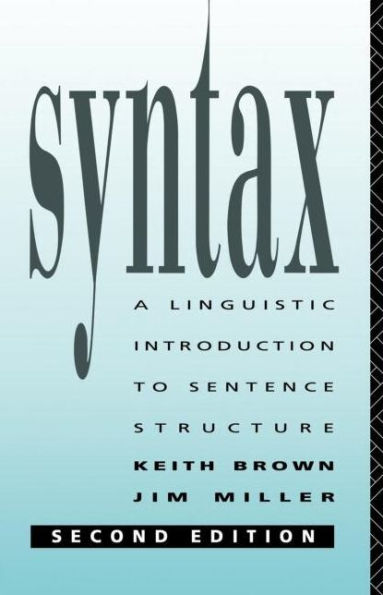5
1
9780415084215



Syntax: A Linguistic Introduction to Sentence Structure / Edition 2 available in Hardcover, Paperback, eBook

Syntax: A Linguistic Introduction to Sentence Structure / Edition 2
- ISBN-10:
- 0415084210
- ISBN-13:
- 9780415084215
- Pub. Date:
- 05/16/1991
- Publisher:
- Taylor & Francis
- ISBN-10:
- 0415084210
- ISBN-13:
- 9780415084215
- Pub. Date:
- 05/16/1991
- Publisher:
- Taylor & Francis

Syntax: A Linguistic Introduction to Sentence Structure / Edition 2
$71.99
71.99
In Stock

Product Details
| ISBN-13: | 9780415084215 |
|---|---|
| Publisher: | Taylor & Francis |
| Publication date: | 05/16/1991 |
| Series: | Linguistic Introduction to Sentence Structure |
| Edition description: | Revised |
| Pages: | 396 |
| Product dimensions: | 5.44(w) x 8.50(h) x (d) |
About the Author
From the B&N Reads Blog
